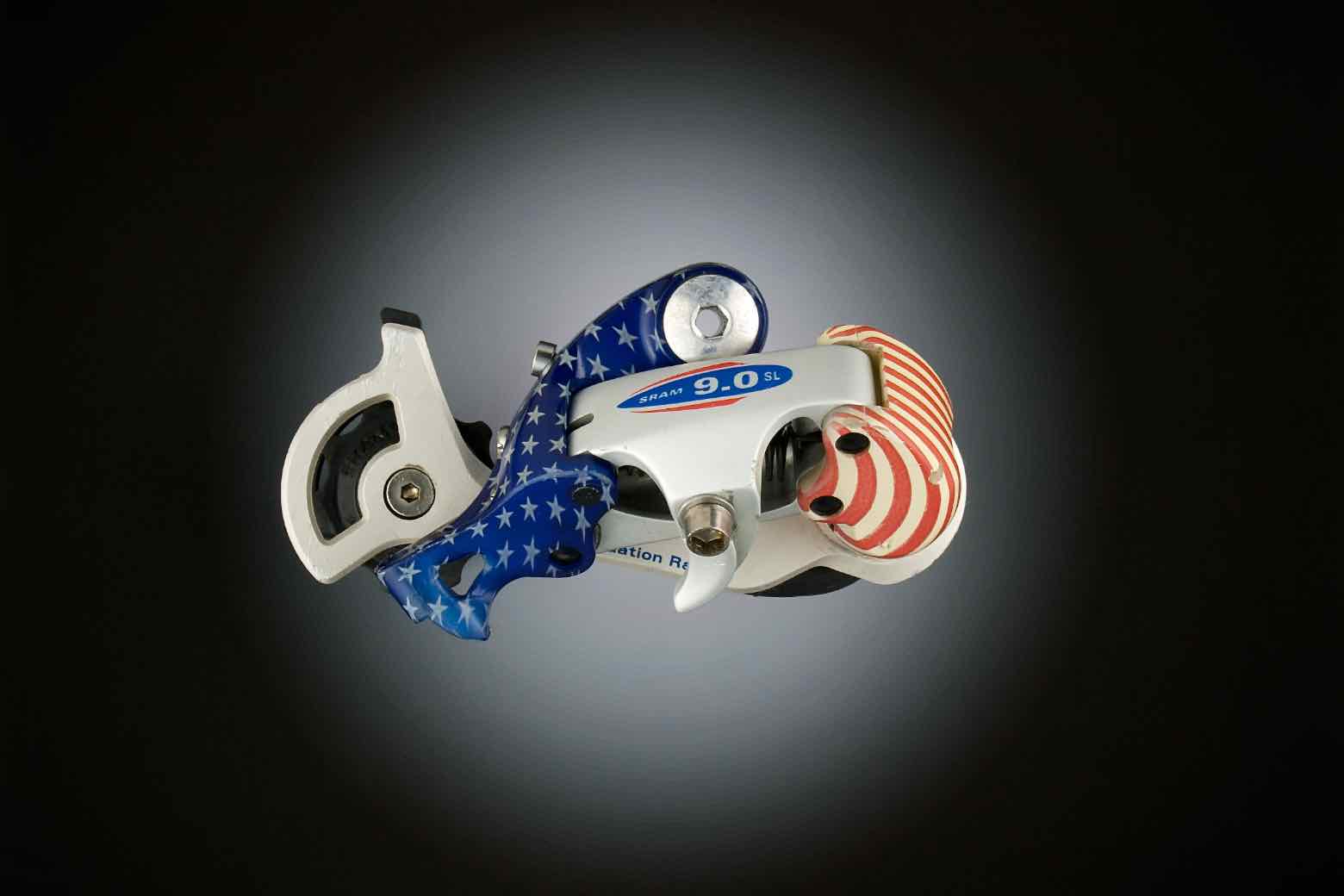


DISRAELI GEARS
SRAM Corporation was founded in 1987 in Chicago, Illinois. The name is supposedly a contraction of the names of its founders, Scott, Ray and Sam, where Ray is the middle name of Stan Day, the company President. It’s all strangely reminiscent of Agnetha, Björn, Benny and Anni-Frid, although one can only speculate whether Stan Day looks as good in a body-hugging, but flared, silver lamé jump-suit.
In 1988 the company introduced its ‘Grip Shift’ twist grip shifters. The first model to catch the public’s imagination was the CAT-1 version, which could be fitted to triathlon bars. Scott Molina used the CAT-1 to win the 1988 Hawaii Ironman. For a number of years I regarded Grip Shift as a specialist product for triathletes.
In 1990 Greg Herbold started to use a Grip Shift in downhill races - and the product started to gain acceptance in mountain biking circles. In 1991 SRAM decided to really go for it, opened a factory in Taiwan and introduced the Grip Shift SRT 300 model, an affordable product that was widely specified as original equipment by the likes of Cannondale, Trek and Specialized. By 1992 SRAM had sold its one millionth Grip Shift and by 1994 it had sold ten million units. This was an astounding accomplishment in a world that was totally dominated by Shimano, with even the once mighty SunTour being put to the sword.
In 1995 SRAM introduced its ESP derailleur range, headed up by the SRAM ESP 900. These derailleurs were constructed from exciting materials like carbon composites and used SRAM’s one-to-one actuation design. However there were problems with the knuckles (?) of the ESP 900 and SRAM had to recall their entire production. Undeterred, SRAM slightly redesigned the gear, sorted out the production process and in 1996 relaunched the gear as the SRAM ESP 9.0, and then, in 1997, released a lightweight version called SRAM ESP 9.0SL.
Also in 1997, SRAM bought the Sachs Bicycle Components unit of the old Fichtel & Sachs company from Mannesmann. By doing this SRAM acquired most of the components that they needed in order to be able to offer a complete groupset. However they also acquired a load of decrepit European factories and a parallel range of Sachs derailleurs. SRAM dropped the ‘Sachs’ brand from 1999, but continued with some of Sach’s derailleur designs under the ‘SRAM’ brand name until about 2001.
In 2001 SRAM introduced the X-0 derailleur, blending the ESP’s one-to-one actuation, with Blade Runner sci-fi styling that owes more to the Sachs heritage. SRAM had by this time, introduced a full range of mountain bike derailleurs covering all price points. Finally in 2006 (?) SRAM introduced a range of road components including derailleurs.g
In 2002 SRAM acquired RockShox (suspension forks) and in 2004 bought Avid (brakes). More recently SRAM have bought Truvativ (cranks) and Zipp (wheels and all things carbon) allowing SRAM to offer bicycle manufacturers a more complete line than even Shimano.
It’s a breathtaking story, I don’t think there were many people in the bicycle world in the mid 1980’s who would have thought that it was wise to try to build a company to mount a full-frontal assault on Shimano in the way that SRAM has done. The bicycle industry, and the bicycle consumer have both benefitted as a result.